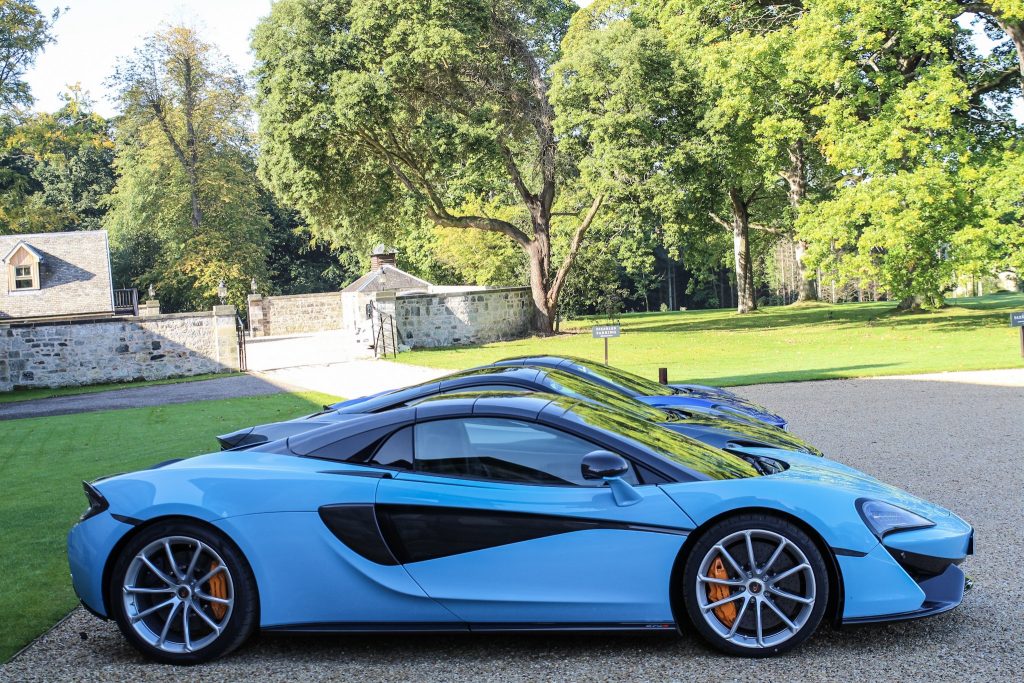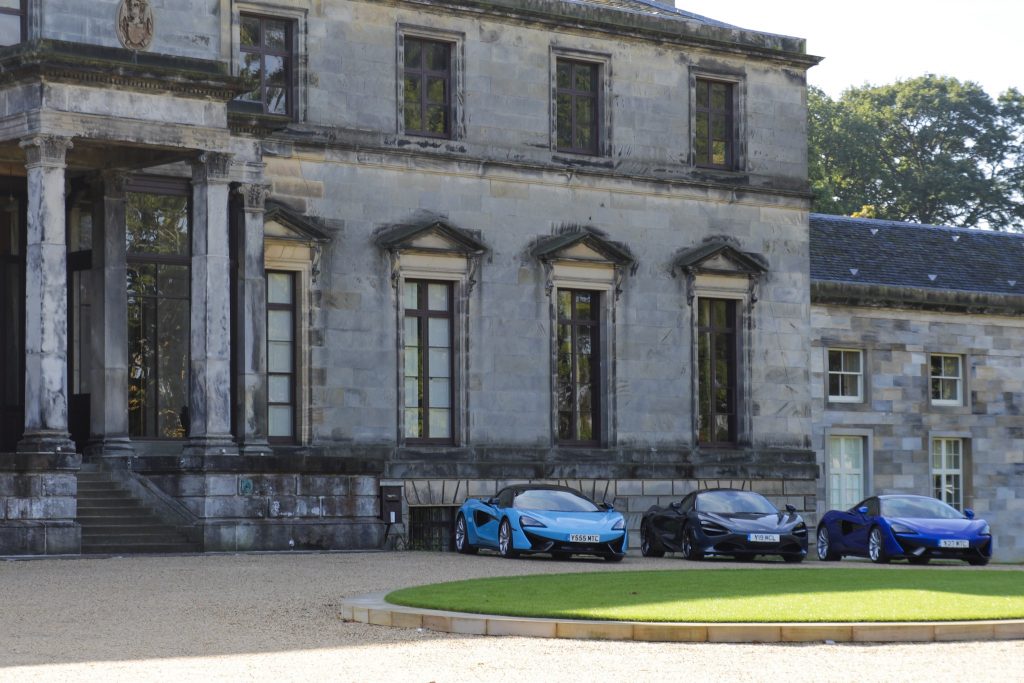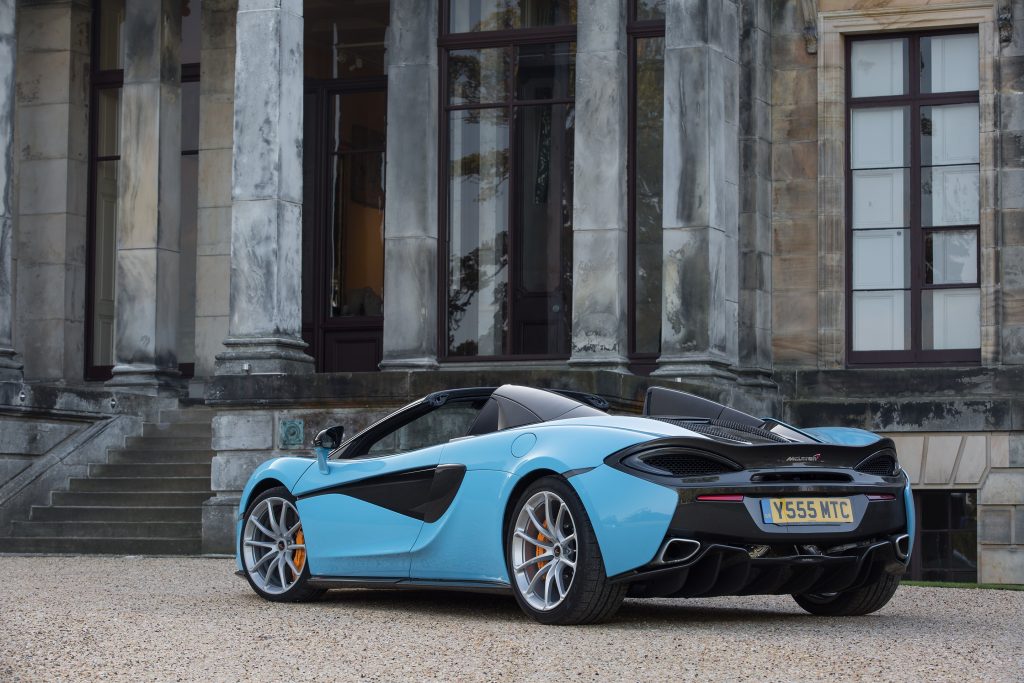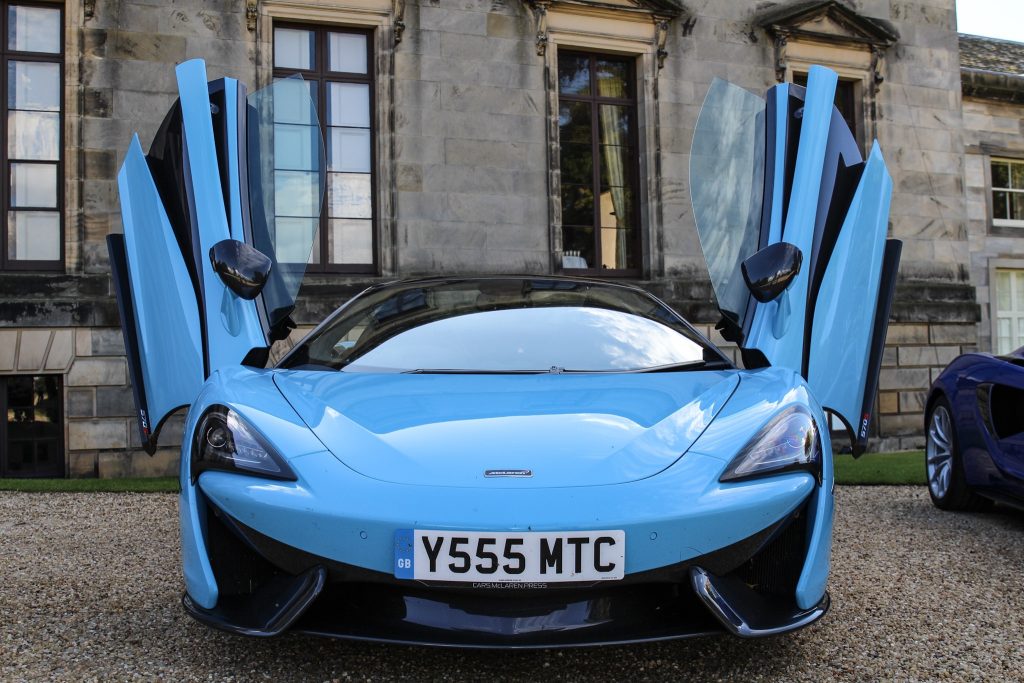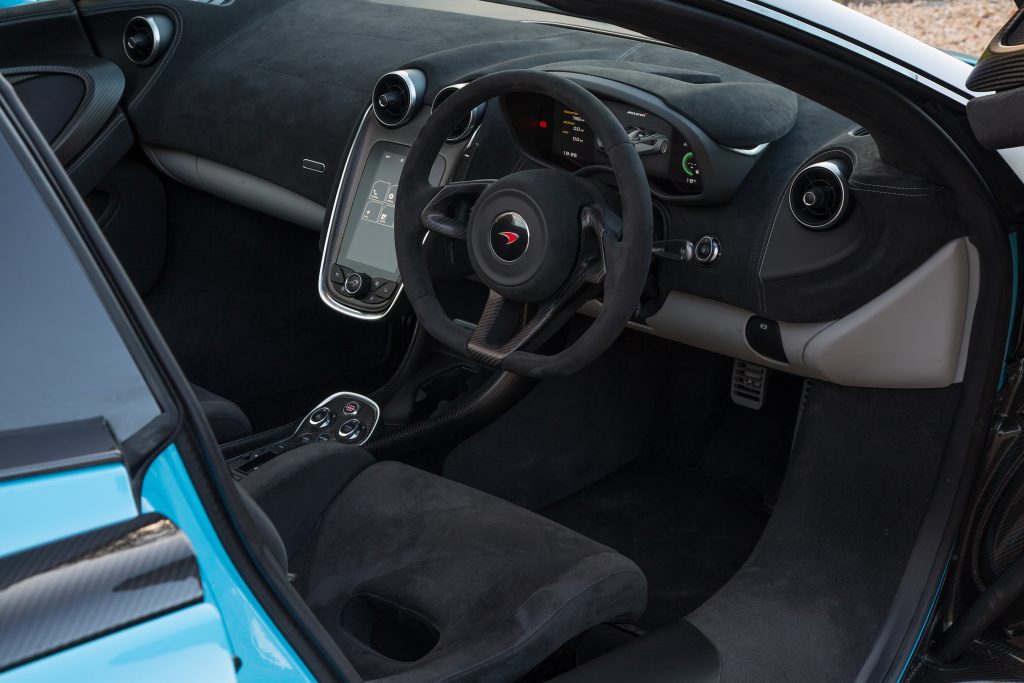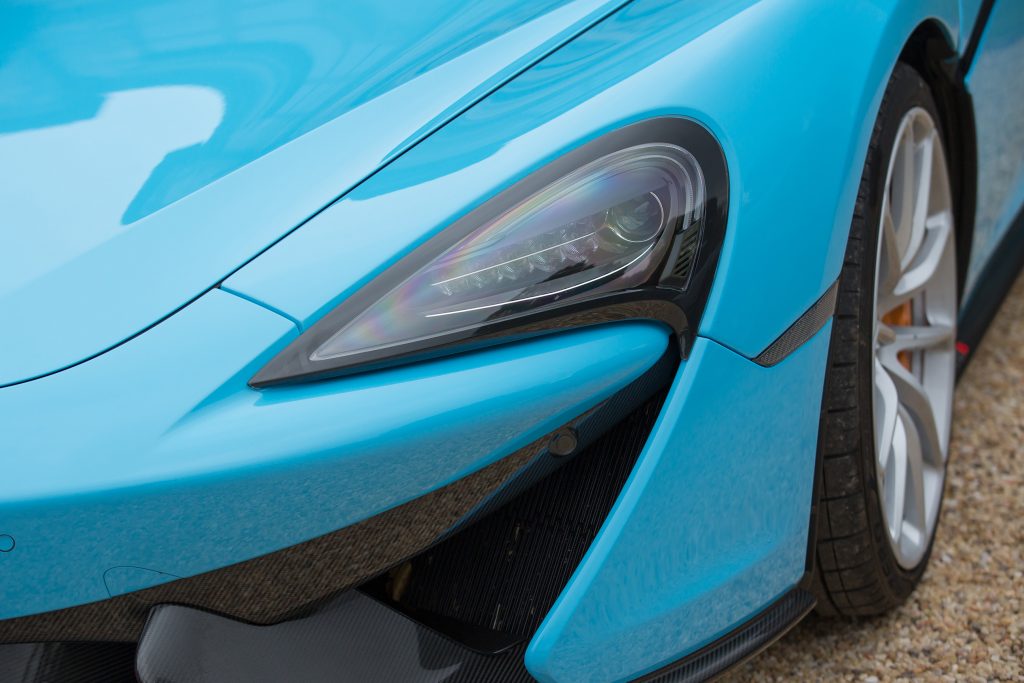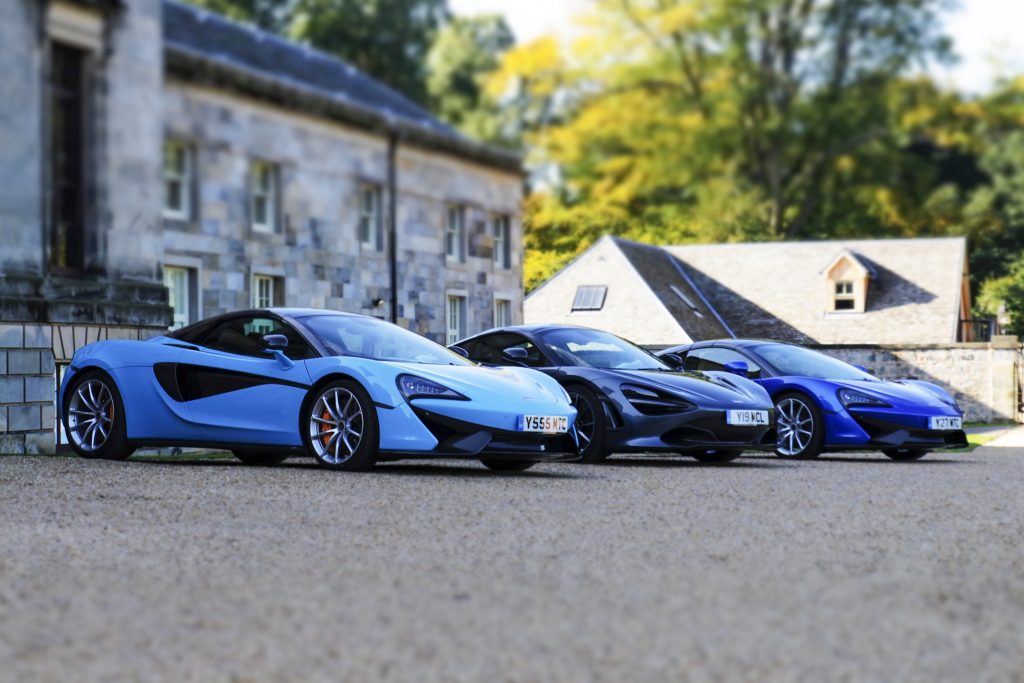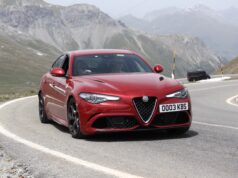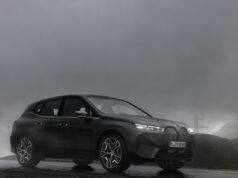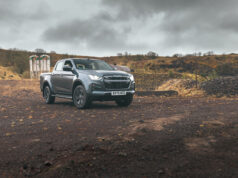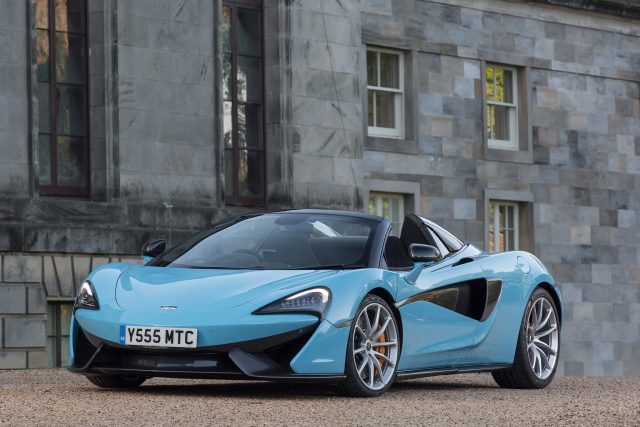
What’s your definition of a fast car?
A hot hatch? A supercar? For many of us, based on the cars we’ve been exposed to, this will no doubt vary considerably. A question compounded by the fact that the current generation of uber hatches and sports cars are, in real terms, knocking on the door of yesterday’s supercar performance. Despite being used to some fairly nippy machinery, a day spent with McLaren as part of their 2017 tour was about to result in my own definition being somewhat revised…
The Scottish leg of the tour was based at the stunning Broomhall House near Dunfermline and featured the 570S Spider and the 720S. We only had approximately an hour with each car (I know, poor us eh?), so not enough time for a full review but sufficient to make a reasonable assessment. Having driven a 570S before, I must admit the main event of the day for me was the new Super Series model. However, that said, I’m a big fan of both the 570S and convertibles, so that combined with nigh on perfect weather, the new Spider should make a fantastic appetiser.
Unsurprisingly, the 570S Spider is fundamentally a 570S, with a retractable roof, a similar mechanism to that already seen with previous McLaren drop tops. Normally when the roof is lopped off a car to make a convertible, it results in a weakening of the body structure, requiring additional chassis strengthening to minimise flex. Even after this (and often as a result of it due to the extra weight), convertibles tend to suffer from inferior driving dynamics compared to the coupe equivalent. As with all McLaren’s, the 570S Spider features a carbon fibre central tub (MonoCell II), which due to its inherent strength, doesn’t require any modifications at all, so the structural rigidity is unchanged. The result is proof that you can have your cake and eat it – a convertible which drives identically to the fixed roof version, i.e. very well indeed!. The only weight penalty is 46kg for the roof mechanism, with the car weighing in at 1359kg (dry).
The Spider’s design probably isn’t as cohesive as the 570GT but the folding roof/buttresses have been integrated well and it looks particularly good with the roof down. Lowering takes 15 seconds and can be done at speeds of up to 25 mph. Additionally, a great feature of the Spider is the ability to lower the rear window when the roof is up. This allows more exhaust noise in the cabin while avoiding the elements when our Scottish climate isn’t being quite so convertible friendly. That noise isn’t as intoxicating as a large capacity naturally aspirated engine (even with the optional sports exhaust), but it’s much more of an aural experience when open to the elements.
It’s been awhile since we drove the 570S (click for review here…) and the first thing I’m reminded of is how well McLaren have nailed ride quality and comfort, and the Spider is no different. It really is superb. Thanks to that carbon tub there are no noticeable shakes or shimmies though the structure – even on the rough/broken surfaces of our typical B roads. Switching the adaptive dampers from Normal to Sport tightens the suspension up a wee bit but it’s still impressively well controlled, doing a great job of keeping you isolated from the surface imperfections while providing sufficient feedback at the same time. The steering assistance is provided hydraulically not electrically and although it doesn’t provide a Lotus level of detail (not many cars do), it’s very good.
Performance is also identical to the coupe (bar an irrelevant tenth difference on the 0-124mph), which means the Spider has all the performance you could ever really want and/or need. I still find it amusing that McLaren refer to the 570S (and it’s less powerful brother, the 540C) as the Sports Series, differentiating it from the more powerful Super Series models (previously 12C, 650S and now the 720S) – as if it isn’t a full blown supercar. In almost every measurable and subjective assessment, it more than qualifies for the supercar label. There is some lag low down in the rev range but avoid that and utilise the huge mid range shove, and by any standards it’s an extremely fast car. Above the initial couple of thousand rpm, the throttle response is sharp and it’s more than happy to be rung out right round to the 8500 rpm limiter.
To be honest, I’ve never quite got the ‘everyday supercar’ thing. Regardless of how easy they are to live with, there are times when a ‘normal’ car is just better. However, the McLaren does make a very strong case for those who want to daily their exotica, it’s an incredibly versatile car. One day you could be commuting, roof up, enjoying coupe levels of refinement, a compliant ride, and seamless gear changes – the next, blasting round the highland in Sport mode, roof down, having a ball. There will always be a demographic who prefer their supercars with a harder edge (TT’s Olie for example considers anything with doors and a windscreen, a bit soft), but for most, the 570S Spiders breadth of abilities will be a big part of the appeal.
Some might see convertibles as cars for posers, for people who want to be seen, but in my opinion it adds another valuable dimension to driving. With all the talk of cars becoming too ‘digital’ and less involving, surely being more exposed to the sights, sounds and smells around you can only be seen as a positive? Doing everything as well as its coupe brother, plus offering the flexibility to drop the roof when your mood and the weather suits, I suspect the Spider will become the big seller of the 570 range. Unless you really have an aversion to convertibles or the approximate 10% premium is a factor, then I really can’t think of reason why not to opt for the Spider and it would be my McLaren of choice – for now at least. Will that change once we’ve experienced the 720S? To be continued…
McLaren 570S Spider
PRICE: £164,750 (as tested £226,710)
ENGINE: 3.8 litre twin turbo V8, 7 speed dual clutch
POWER: 570 PS @ 7,500 rpm
TORQUE: 600 Nm @ 5000-6500 rpm
PERFORMANCE: Top speed 204 mph; 0-62 mph 3.2 secs; 0-124mph 9.6 secs
CONSUMPTION: 26.6 mpg (combined)
CO2: 249 g/km


